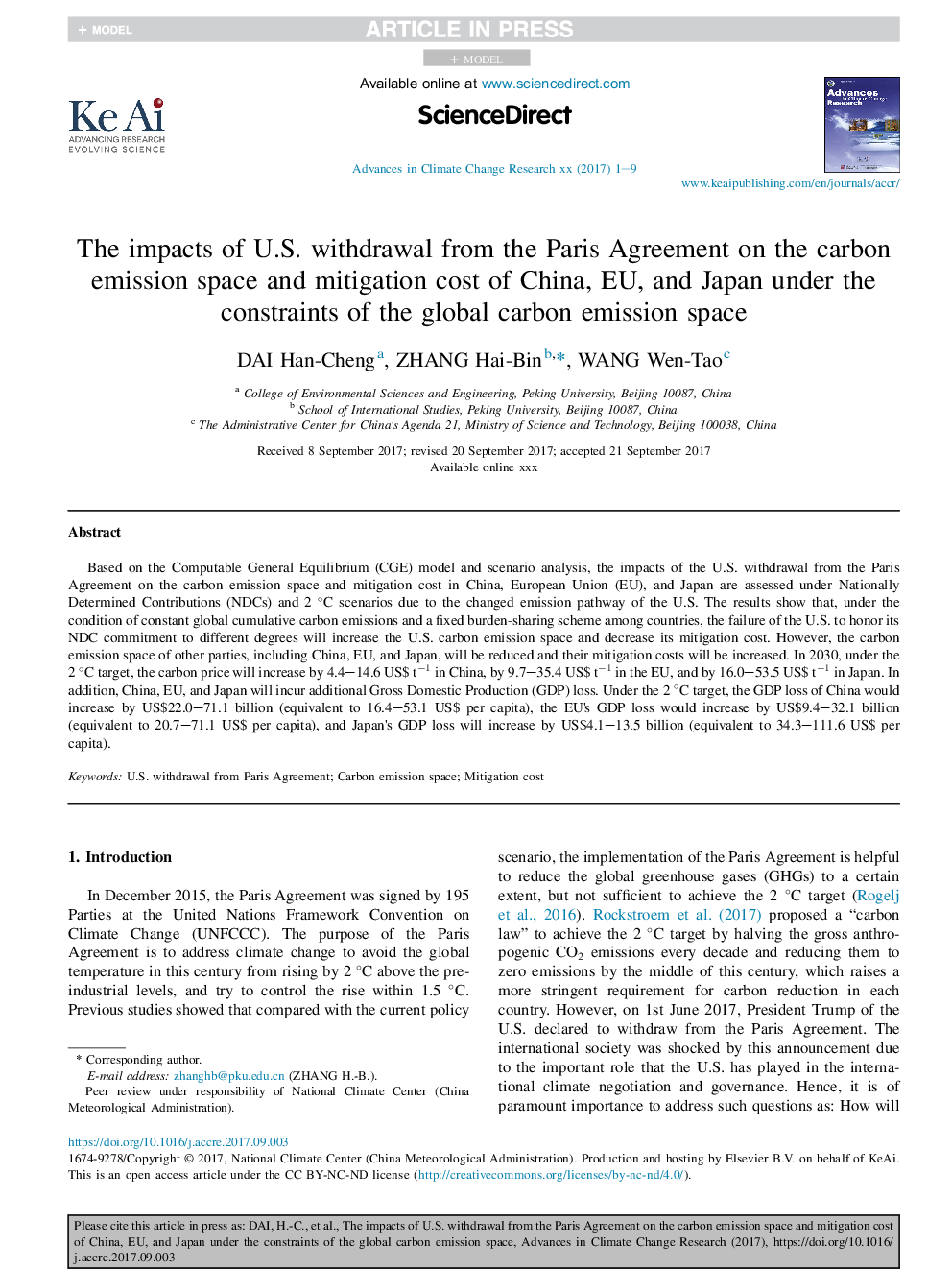| Article ID | Journal | Published Year | Pages | File Type |
|---|---|---|---|---|
| 8906194 | Advances in Climate Change Research | 2017 | 9 Pages |
Abstract
Based on the Computable General Equilibrium (CGE) model and scenario analysis, the impacts of the U.S. withdrawal from the Paris Agreement on the carbon emission space and mitigation cost in China, European Union (EU), and Japan are assessed under Nationally Determined Contributions (NDCs) and 2 °C scenarios due to the changed emission pathway of the U.S. The results show that, under the condition of constant global cumulative carbon emissions and a fixed burden-sharing scheme among countries, the failure of the U.S. to honor its NDC commitment to different degrees will increase the U.S. carbon emission space and decrease its mitigation cost. However, the carbon emission space of other parties, including China, EU, and Japan, will be reduced and their mitigation costs will be increased. In 2030, under the 2 °C target, the carbon price will increase by 4.4-14.6 US$ tâ1 in China, by 9.7-35.4 US$ tâ1 in the EU, and by 16.0-53.5 US$ tâ1 in Japan. In addition, China, EU, and Japan will incur additional Gross Domestic Production (GDP) loss. Under the 2 °C target, the GDP loss of China would increase by US$22.0-71.1 billion (equivalent to 16.4-53.1 US$ per capita), the EU's GDP loss would increase by US$9.4-32.1 billion (equivalent to 20.7-71.1 US$ per capita), and Japan's GDP loss will increase by US$4.1-13.5 billion (equivalent to 34.3-111.6 US$ per capita).
Keywords
Related Topics
Physical Sciences and Engineering
Earth and Planetary Sciences
Atmospheric Science
Authors
Han-Cheng Dai, Hai-Bin Zhang, Wen-Tao Wang,
